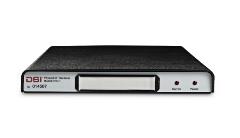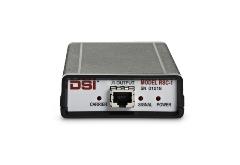Forced exercise allows researchers to see how genetic models and disease states respond to elevated physical stress in animal models. Treadmills are a common method of forcing exercise. Often, studies are enhanced by integrating telemetry to measure physiologic responses and better understand the full effect of exercise. In order to provide a recommendation on how best to accomplish this, DSI performed an internal study using the PhysioTel and PhysioTel HD telemetry with the Panlab treadmill. Previously, integration had only been tested for specific use cases. There were concerns that noise from the treadmill motor could affect the integrity of telemetry data. In addition, the close proximity of treadmill lanes raised concerns of crosstalk in telemetry signals if multiple implanted animals were running simultaneously.
This internal study was conducted by DSI’s Scientific Services team. The team implanted two animals, one with the ETA-F10 PhysioTel implant and the other with the PhysioTel HD-X11. Both the RPC-1 and RSC-1 receivers were tested in various locations and positions around the treadmill (receivers shown below).


RPC-1 (dimensions: 32.8 x 22.7 x 3.3 cm) RSC-1 (dimensions: 13.2 x 8.4 x 3.0 cm)
First, the team acclimated the animal to the treadmill, letting them sniff around while the treadmill was stationary. They then slowly increased the speed on the treadmill so they could get used to walking on it. Stainless steel shielding (.06” thick) was placed between the treadmill motor and running lanes to block noise from interfering with telemetry signals. The conclusions of the study include:
- For optimal receiver coverage, place one RPC-1 upside down on top of the running lanes.
- Additional shielding with stainless steel between the treadmill motor and belt is recommended to prevent noise generated from the motor and signal dropout. The shielding used in this study can be purchased from DSI.
- It is recommended that only one implanted mouse runs on the treadmill at a time as shielding running lanes with aluminum foil had no effect in reducing signal interference and data dropout from neighboring implants.

The image above shows the recommended study setup with an RPC-1 receiver placed on top of the running lanes and shielding above the motor.
Examples of research which would benefit from this integrated approach include studies related to exercise physiology, cardiac stress testing, or heart rate variability studies. A research team from Yamaguchi University Graduate School of Medicine in Japan looking to better understand catecholaminergic polymorphic ventricular tachycardia incorporated DSI telemetry and the Panlab treadmill into their study, as described below.
Dantrolene, a Therapeutic Agent for Malignant Hyperthermia, Inhibits Catecholaminergic Polymorphic Ventricular Tachycardia in a RyR2R2474S/+ Knock-In Mouse Model
Catecholaminergic polymorphic ventricular tachycardia (CPVT) is a condition characterized by arrhythmia.1 As heart rate increases in response to physical activity or emotional stress, it can trigger an abnormally fast and irregular heartbeat. Beta-blockers are commonly used as a first line of defense against CPVT, but their efficacy in fighting the condition is low. In an effort to identify a more effective treatment option, this research team investigated the anti-arrhythmic effect of Dantrolene, a specific agent for the treatment of malignant hyperthermia, on a mouse model of CPVT. Heart rate was increased either with an injection of epinephrine or via treadmill exercise on the Panlab treadmill. They measured ECG levels before, during, and after exposure to injection or exercise using DSI’s PhysioTel implantable telemetry. Results showed that treatment with Dantrolene prior to exposure prevented CPVT.2 In 2015, a clinical study was completed to test the anti-arrhythmic effects of Dantrolene in humans. The findings indicated that intravenous dantrolene “abolished or markedly reduced arrhythmias in a subgroup of CPVT1 patients with specific RyR2 mutations”.3
If you are interested in learning more about this combined solution, please complete our product information request form.
References
1 NIH. (2018). “Catecholaminergic polymorphic ventricular tachycardia”. https://ghr.nlm.nih.gov/condition/catecholaminergic-polymorphic-ventricular-tachycardia
2 Kobayashi S, Yano M, Uchinoumi H, Suetomi T, Susa T, Ono M, Xu X, Tateishi H, Oda T, Okuda S, Doi M, Yamamoto T, Matsuzaki M. (2010). “Dantrolene, a therapeutic agent for malignant hyperthermia, inhibits catecholaminergic polymorphic ventricular tachycardia in a RyR2(R2474S/+) knock-in mouse model”. Circulation Journal, 74. https://www.jstage.jst.go.jp/article/circj/74/12/74_CJ-10-0680/_pdf/-char/ja
3 Penttinen K, Swan H, Vanninen S, Paavola J, Lahtinen AM, Kontula K, Aalto-Setälä K. (2015) “Antiarrhythmic Effects of Dantrolene in Patients with Catecholaminergic Polymorphic Ventricular Tachycardia and Replication of the Responses Using iPSC Models”. PLOS ONE. https://journals.plos.org/plosone/article?id=10.1371/journal.pone.0125366